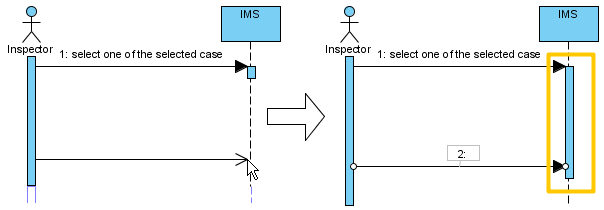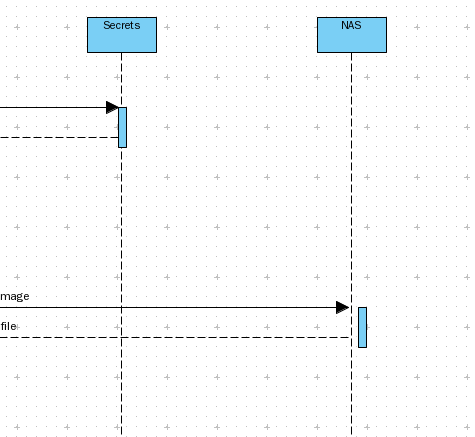

- #Visual paradigm sequence diagram how to#
- #Visual paradigm sequence diagram update#
- #Visual paradigm sequence diagram full#
- #Visual paradigm sequence diagram software#
#Visual paradigm sequence diagram update#
UML Designer offers a lot of support in the form of tutorials and guides, and they often release update bundles. Meaning, that if you’re looking for something that can be used by everyone in your team, this may not be the program for you.
#Visual paradigm sequence diagram software#
This is an open-source program for software developers. Last but not least on our list is UML Designer. Paid versions for personal use, teams, and enterprises.Creately is very user-friendly, so even beginners can get into the swing of things quickly. Their diagram templates are sorted by profession, which makes the diagram type you need easy to find. Star UML is focused on functionality and efficiency, with no bells and whistles.Ĭreately is a fun, colorful tool that can be used by teams in all types of industries, such as education, marketing, IT, and manufacturing. It’s functional across multiple platforms, including MacOS, Windows, and Linux. As such, the types of diagrams you can create are limited to those found within the software development field, like class diagrams and entity-relationship diagrams. Star UML is geared towards developers using agile and concise modelling methods. Visual Paradigm is more than just a diagram tool, which makes it an attractive fit for large enterprises. Not only can you create diagrams, there are a lot of other tools for project management, such as quality improvement tracking, scrum processes, and enterprise architecture tools.

If you’re an experienced diagrammer with a large or small team setting, Visual Paradigm will be a great fit for your team. A more detailed breakdown of what Draw.io can do can be found in our recent post Lucidchart vs Draw.io. It lacks the collaboration features of Lucidchart and Gliffy, but users can share files using Google Drive. Importing and exporting diagrams is a breeze, and their shapes library has everything you need to create your diagram.įor those among us who are less tech-savvy, or who are new to making UML diagrams, Draw.io offers an easy to use drag and drop program. Gliffy is highly compatible with other programs, including Confluence and Jira. This is a simpler program for the more artistic or inexperienced diagrammers who like flexibility and diverse options.
#Visual paradigm sequence diagram how to#
Read more on how to create a sequence diagram using Gleek on Library management system example. Gleek is an online tool that lets you start right away. So instead of scouring through a library of images, you simply type commands into the text box to create your diagram. Rather than using a drag and drop system like Gliffy or Lucidchart, Gleek is entirely text-based. Gleek is quite different when compared to the other tools on this list. Here are some other features that might attract you to Lucidchart. To get a more in-depth look at what this app can do, check out our side-by-side comparison of Lucidchart with Gliffy.
#Visual paradigm sequence diagram full#
They offer a wide variety of diagram templates, a full shapes library, and impressive collaboration features.

Lucidchart is one of the highest-rated diagramming tools currently on the market. Sequence diagram tools are used by software developers and professionals in other industries to map out systems in a way that’s easy to read and change.

As you might guess, they express these events in the order of which they occur, in other words, in a sequence. Basically, sequence diagrams track the messages sent between components of a system. Sequence diagrams, also known as ‘event diagrams’, show how different parts of a system interact with each other over time. Check out our post on everything you need to know about UML diagrams to learn more. Sequence diagrams are just one of several types of UML diagrams that software developers and other professionals use to make their projects come to life. What are they? What can you use them for? Which one is best for you and your team? We’ve compiled a list of the top 8 UML sequence diagram tools on the market in 2021, and can hopefully answer some of these questions for you.


 0 kommentar(er)
0 kommentar(er)
